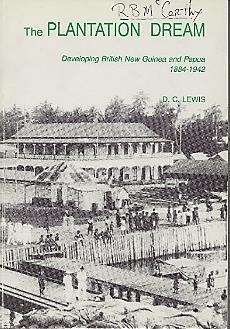
1 minute read
Opportunists/Entrepreneurs- Sandalwood and New Guinea Walnut
from PNGAF MAG ISSUE #9J W3 of19th Nov 2022 PNG WOODS Phases of Industrial Development till 1975
by rbmccarthy
OPPORTUNISTS / ENTREPENEURS- Cedar, Sandalwood and New Guinea Walnut
Australia administered Papua from 1901 and declared it a Commonwealth Territory in 1906.11 It took over German New Guinea during the First World War and was mandated to administer it by the League of Nations in 1920. The Territories attracted little interest in Australia in the 1920s, their combined European population was slightly under 2000, their exports were unimportant to Australia, their commercial history was poor, and they required grants to administer. Nevertheless, they attracted men, like Judge Hubert Murray (1861–1940) and Staniforth Smith (1869–1934) who were remarkably dedicated to good government. The only scientist they employed was the Government Geologist, Evan Stanley (1885–1924). However, their botany had long attracted collectors, particularly of the orchids. A formidable British Lieutenant-Governor, Sir William MacGregor (1846–1919), had even sent specimens gathered on his ascent of Mount Victoria to Ferdinand von Mueller, the Government Botanist in Victoria, in 1889.
Advertisement
When Murray was appointed Administrator of Papua in 1907, cedar logs were being exported, but there was only a little practical knowledge of the other species.
McAdam12 reported that with the arrival of the white man, it was found there was a scattering of valuable trees which were attractive to buyers elsewhere. Some attempts were made to float out easily accessible logs of species such as cedar. In the period from European contact and settlement in the late nineteenth century, to the outbreak of World War 2 in the Pacific, the timber industry was concerned mainly with speculative exploitation of cedar, sandalwood from around Port Moresby, and New Guinea walnut from New Britain and New Ireland13. The utilisation of the forests was mostly incidental to other activities like gold mining or agricultural plantation development.
The wharf at Samarai in 1927. Source. Samarai Views 1927. Collection John Oxley Library Brisbane.
Lewis14 provided a detailed analysis of land settlement by Europeans and the early vicissitudes of plantation agriculture in British New Guinea and Papua up until the outbreak of war in the Pacific in 1942.
11 PNGAF MAGAZINE ISSUE # 9A of 15th March 2021
12 J B McAdam’ address to Papua and New Guinea Scientific Society’s annual report of 1952 “Forestry in New Guinea” 13 New Horizons 1973 Jacaranda Press. 14 Lewis DC The PLANTATION DREAM -Developing British New Guinea and Papua 1884-1942

